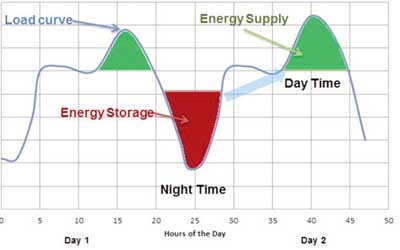
Sandia and DOE have released a new tool to help utilities, developers, and regulators identify the energy storage options that best meet their needs.
Partnering with DNV-KEMA, a global testing and consulting firm, Sandia is releasing Energy Storage Select, or ES-Select, software under a public license to the company.
The tool makes it easier to conduct a quick, basic analysis of energy storage options and determine the value of energy storage technologies for a specified application. This, developers say, will increase the adoption of energy storage technologies. “ES-Select is the first of a suite of easily accessible web tools to help potential users and regulators make decisions on energy storage options in specific applications,” says Imre Gyuk, program manager of DOE’s Energy Storage program.
The application is available for free download on Sandia’s energy storage website at www.sandia.gov/ess.
“This tool is designed to help users understand at a basic level what storage can do. If it looks beneficial from a cost standpoint, they can explore the options further,” says Sandia project manager Dhruv Bhatnagar (6113).
Utilities and developers who want to use energy storage have many technologies to consider, including flywheels, compressed air, pumped hydro and thermal storage, and six types of electric batteries. All have different costs, and estimating revenue from using various applications is difficult. Researching all relevant cost factors independently previously took days or weeks, but ES-Select aggregates all relevant factors into a single decision-support tool that runs in a few minutes. If the results are favorable for a particular technology, users can determine whether to run detailed, site-specific analysis using other tools.
“ES-Select is an educational and decision-support tool for deployment of energy storage on the power grid,” says Ali Nourai, executive consultant for DNV-KEMA, and co-developer of ES-Select. “It has been created for public use to promote the understanding of storage technologies and the benefits they offer when applied on the electric grid.”
The tool aids decisions about what storage technologies would work best in a given situation. For example, if a business pays more for electricity during the day than at night, the owner could use the tool to quickly evaluate several energy storage options to determine the cost-benefit of buying lower-cost electricity at night and storing it for use during the day.
Users can input the application they are interested in, as well as such parameters as energy costs and discount rates. The program produces a list of storage technologies and their predicted benefits and associated costs. ES-Select aggregates all of the inputs and assumptions — monetary value for an application, technology costs, performance characteristics, and operation and maintenance costs — and quickly spits out recommended options.
Rather than basing decisions on a single factor such as capital cost, ES-Select assesses how an energy storage technology performs while addressing uncertainties in application value, storage cost, cycle life, efficiency, discharge duration, and other parameters.
“With funding from DOE’s Energy Storage Program, Sandia has worked with KEMA to develop a user-friendly, freely accessible tool to evaluate potential applications of energy storage,” says Gyuk. “We hope that this tool will contribute to the widespread adoption of storage on the grid.”
ES-Select should benefit utilities, independent power producers, industrial and commercial enterprises, regulators, lawmakers, and the public, including those doing research on energy storage. “We’ve already had a lot of people asking about this program, and we know many are eager to use it,” says Dhruv. “I think this will encourage those who might not have considered energy storage before to think more seriously about it and evaluate its potential as a viable option.”